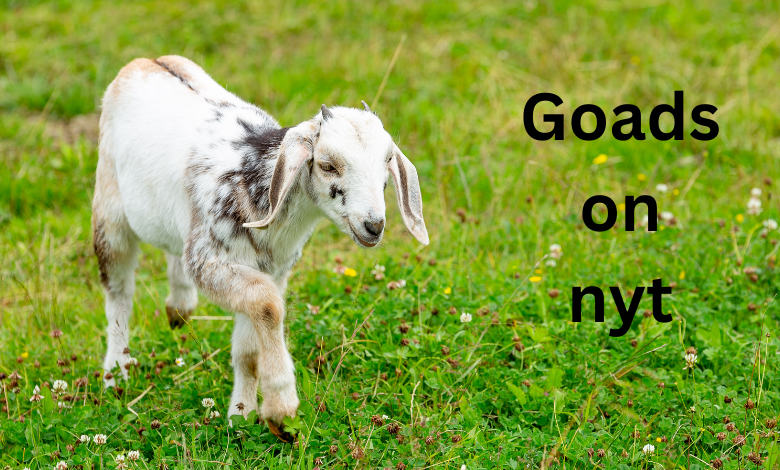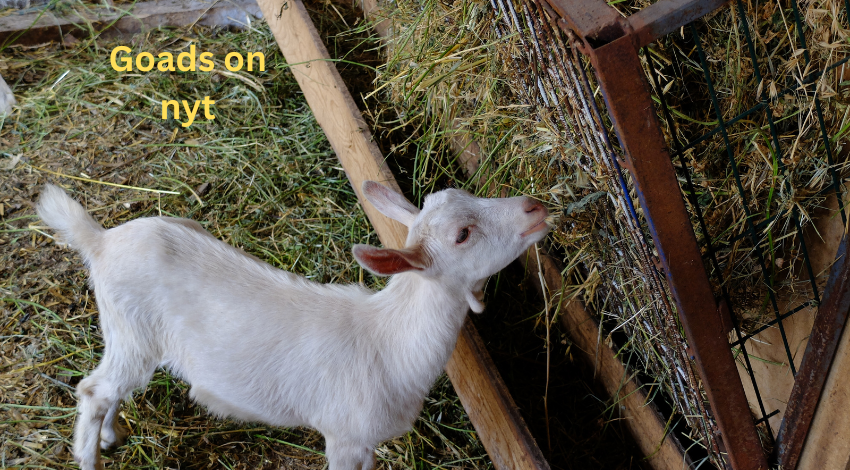Goads on nyt

 Have you ever read a piece of writing that simply made you stop and suppose, or maybe even take action? That’s likely the work of a properly-located goad. In journalism, in particular within esteemed publications like The New York Times (NYT), goads play a essential role in shaping narratives and attractive readers. But what precisely are those goads, and why are they so impactful? Let’s dive into the fascinating international of journalistic goads and their substantial have an effect on at the NYT and its audience.
Have you ever read a piece of writing that simply made you stop and suppose, or maybe even take action? That’s likely the work of a properly-located goad. In journalism, in particular within esteemed publications like The New York Times (NYT), goads play a essential role in shaping narratives and attractive readers. But what precisely are those goads, and why are they so impactful? Let’s dive into the fascinating international of journalistic goads and their substantial have an effect on at the NYT and its audience.
Historical Context
To recognize the idea of goads, we want to appearance lower back at their foundation. The time period “goad” traditionally refers to a stick used for driving cattle. In media, it has developed to mean some thing that provokes or annoys a person into action. Over time, goads have turn out to be a strategic tool in journalism, designed to spur readers into thinking, reacting, or even converting their views.
The Role of Goads in Journalism
So, what precisely is a goad within the context of journalism? Essentially, it’s a story tool used to elicit a particular reaction from the target audience. Whether it’s an emotional response, intellectual stimulation, or an ethical consideration, goads are hired to deepen reader engagement and initiate concept.
Goads and New York Times (NYT)
The NYT is understood for its high requirements of journalism, and it effectively uses goads to influence public opinion. From thought-scary editorials to hard-hitting information tales, the NYT leverages goads to ensure their articles resonate with readers on a deeper level.
Types of Goads Used in NYT
Emotional Goads: These are designed to drag on the heartstrings. Articles that spotlight human struggling, injustice, or triumphs often use emotional goads to connect to readers on a non-public level.
Intellectual Goads: These assignment the reader’s wondering. Analytical portions, investigative journalism, and op-eds often use highbrow goads to initiate deeper contemplation and discussion.
Ethical Goads: These enchantment to the reader’s experience of right and incorrect. By providing ethical dilemmas or highlighting ethical breaches, the NYT uses moral goads to have interaction readers’ moral compasses.
Psychological Impact of Goads
Goads are not pretty much grabbing attention; they have a profound psychological effect. By tapping into readers’ feelings, intellect, or ethics, goads can adjust perceptions and encourage movements. For example, a effective emotional goad may compel a reader to donate to a purpose, at the same time as an intellectual goad ought to spark a debate or change in viewpoint.
Goads in Editorials vs. News Articles
The use of goads can range considerably among editorials and information articles. Editorials, by means of nature, are opinionated and often use sturdy goads to persuade or project readers. News articles, while keeping objectivity, would possibly nonetheless use subtle goads to focus on the importance of the records being provided.
Ethical Considerations
The use of goads have to be balanced with journalistic integrity. While they are powerful gear for engagement, there’s a excellent line among motivating readers and manipulating them. It’s essential for reporters to ensure that their use of goads does not compromise the reality or objectivity in their reporting.
Goads and Social Media
In today’s virtual age, the reach of goads is amplified through social media. Articles from the NYT that use effective goads regularly see increased shares, remarks, and discussions on-line. This interplay similarly complements the effect of goads, extending their impact beyond conventional readership.
Reader’s Perspective
Readers have numerous reactions to goads. Some respect the thought-frightening nature, while others may discover them intrusive or manipulative. Understanding this spectrum of reader perception is important for newshounds aiming to apply goads responsibly and efficaciously.
Case Studies of Notable Goads
Examining particular examples can illustrate the electricity of goads. For example, an NYT article on weather exchange may use an emotional goad by way of specializing in affected communities, an highbrow goad by way of offering compelling data, and an moral goad by way of discussing the ethical vital for action. Analyzing such instances suggests how multifaceted and impactful goads can be.
Comparative Analysis
When comparing the usage of goads within the NYT with different main newspapers, wonderful variations and similarities emerge. While the NYT might excel in subtle intellectual goads, different publications may choose more overt emotional or moral goads. This comparative evaluation highlights the particular editorial strategies across distinct media shops.
Future of Goads in Journalism
Looking beforehand, using goads in journalism is probable to evolve with converting media landscapes. With the rise of virtual structures and evolving reader preferences, journalists will want to conform their goading strategies to stay powerful and moral.
Conclusion
Goads are a powerful element in journalism, in particular within influential guides like the NYT. By knowledge their sorts, affects, and moral issues, we are able to better recognize the nuanced approaches in which goads form media narratives and affect public discourse.
FAQs
What are goads in journalism?
Goads in journalism are narrative tools used to initiate a particular reaction from readers, whether or not emotional, intellectual, or moral.
How do goads have an effect on public opinion?
Goads impact public opinion through enticing readers on a deeper level, encouraging them to assume, experience, and react to the records supplied.
Are goads ethical in journalism?
While goads can be ethical when used responsibly, there may be a quality line among motivating readers and manipulating them. Journalists must balance engagement with integrity.
How do distinct newspapers use goads?
Different newspapers hire goads in various ways, with a few focusing more on emotional appeals, whilst others emphasize highbrow or moral engagement.
What is the future of goads in media?
As media maintains to conform, the usage of goads will possibly adapt to new structures and changing reader alternatives, preserving their function as key gear for engagement.

